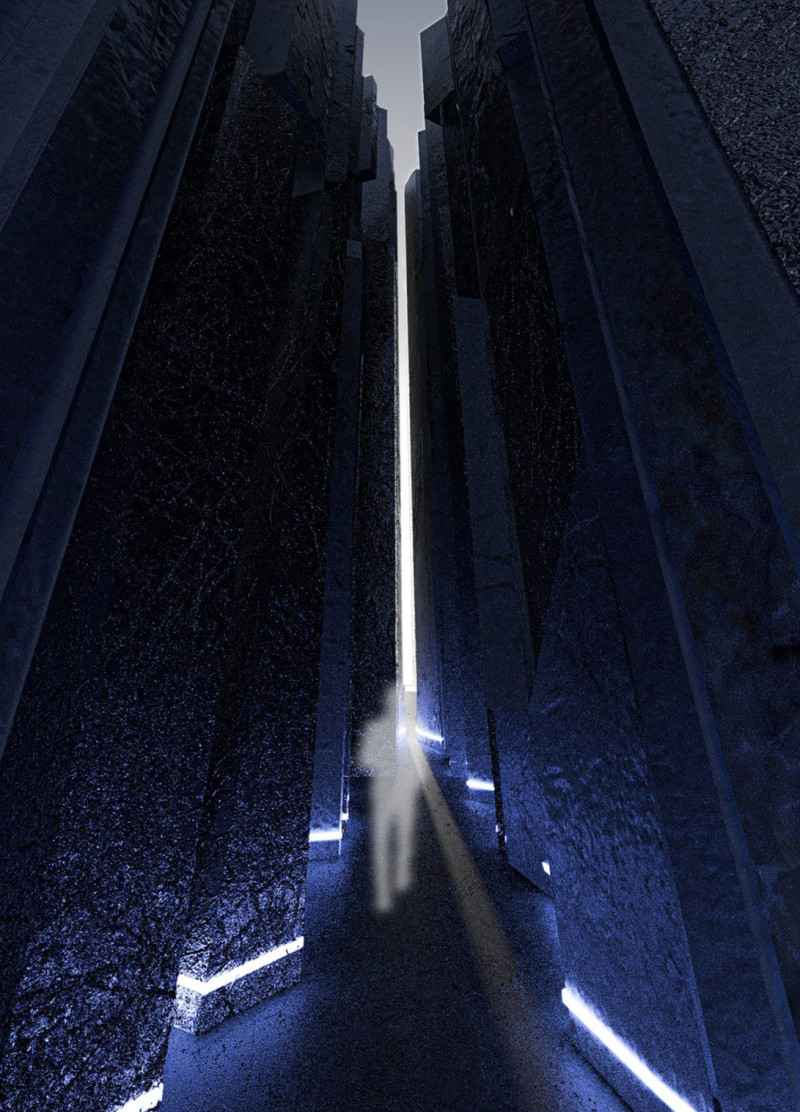5 key facts about this project
The architectural intervention focused on the lives of witches is situated in 'World's End,' a place deeply connected to the history of Salem, MA, known for its witch trials. The design concept is framed as "from start to finish," capturing the narrative that reflects the experiences of judgment and death that these individuals faced. The monument serves as a space for reflection and education, immersing visitors in a poignant historical context.
Architecture Concept
The monument begins with narrow pathways that create a sense of confinement. This design choice sets a serious tone that resonates with the experiences of accused witches before their trials. By guiding visitors through this tight space, the architecture evokes feelings linked to historical injustices while emphasizing the story being conveyed.
Structural Design
Inside, low and flat walls characterize the initial area, symbolizing the restricted lives of witches prior to their trials. This arrangement generates tension and anticipation as visitors move through the monument. The design shifts from broad spaces to rising and narrowing edges, illustrating the increasing pressure faced by the witches. The sharp angles of the structure enhance the emotional weight of their stories, creating a physical connection to their experiences.
Lighting and Atmosphere
An important element of the monument is the thoughtful use of lighting. Blue light follows movement along the walls and floor, mimicking the glow of embers and adding an ethereal quality to the space. This changing light not only enhances the experience but also reinforces the historical context of the trials. It serves as an ongoing reminder of the fate that many faced, blending the atmosphere with the narrative within the structure.
Materiality
Though specific materials are not mentioned, the architecture indicates careful selection that aligns with the somber themes present in the design. The interplay of light and shadow likely uses materials that emphasize the emotional impact of the monument, creating a reflective environment. This consideration of materials contributes to the overall narrative intent, ensuring the project communicates the complex history it addresses.
The design culminates in a thin line at the monument's peak, symbolizing death and serving as a reminder of the lives lost.



















































